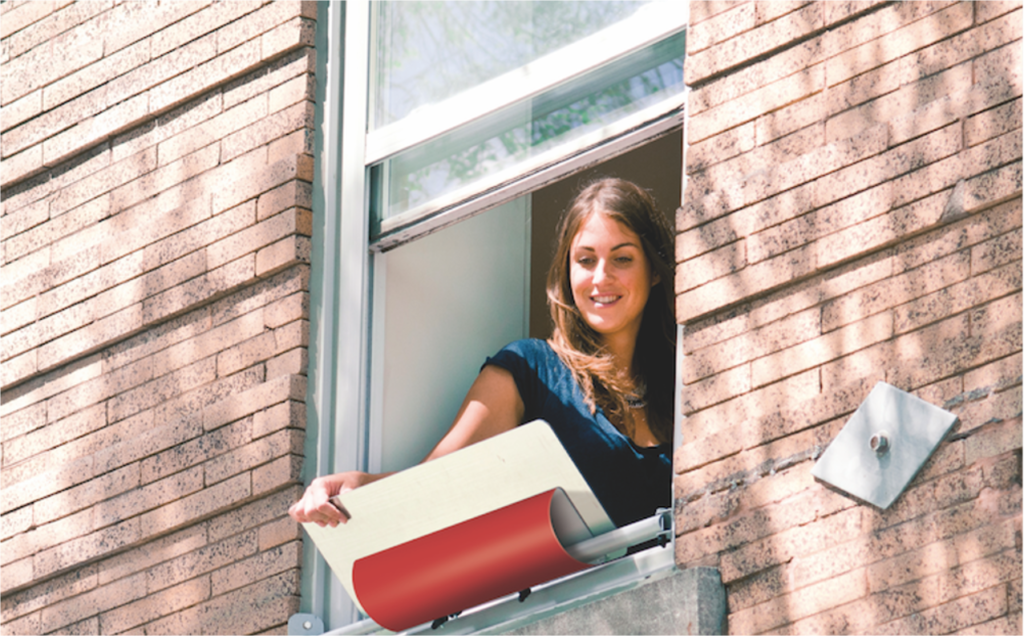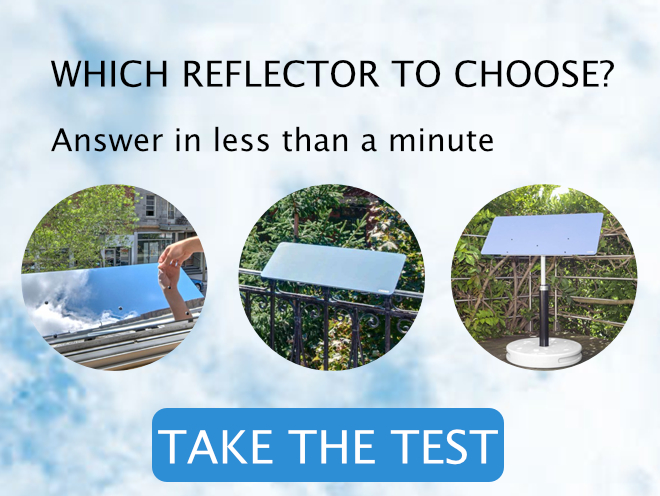How to grow vegetables in a vegetable garden in the shade of the surrounding buildings. This is the challenge that the ISA, Institut Supérieur Agricole de Lille (Higher Institute of Agriculture of Lille), gave us for its vegetable garden in the city center.
Project sheet:
- Project : Lighting of an experimental vegetable garden in the city center
- Location : Lille in France
- Client : Junia ISA
- Espaciel model installed : Solar Patio reflector
Context of the situation of the vegetable garden in the shadow of the ISA
The ISA occupies an emblematic building in the district of the Catholic University of Lille. Its contemporary architecture highlights the various professional opportunities for students. Its roof terraces are home to beehives that are clearly visible from the street. Dummy cows graze on the green roofs suspended above the classrooms. At the bottom of the building, a recessed garden leads down to high monumental glass windows. They shed light on the major laboratories dedicated to the agri-food industry.
The demonstrative character of the building continues inside. The demonstrative character of the building continues inside, where a footbridge overhangs a small pond. After passing through the reception hall and along the main lecture hall, you come to the central patio. It is six stories high and serves all levels from the first floor. In this area there is a vegetable garden in the shade. It consists of an experimental greenhouse and a “farmbot” (cultivation robot). Its operation depends largely on the LED lighting that remains on all day.
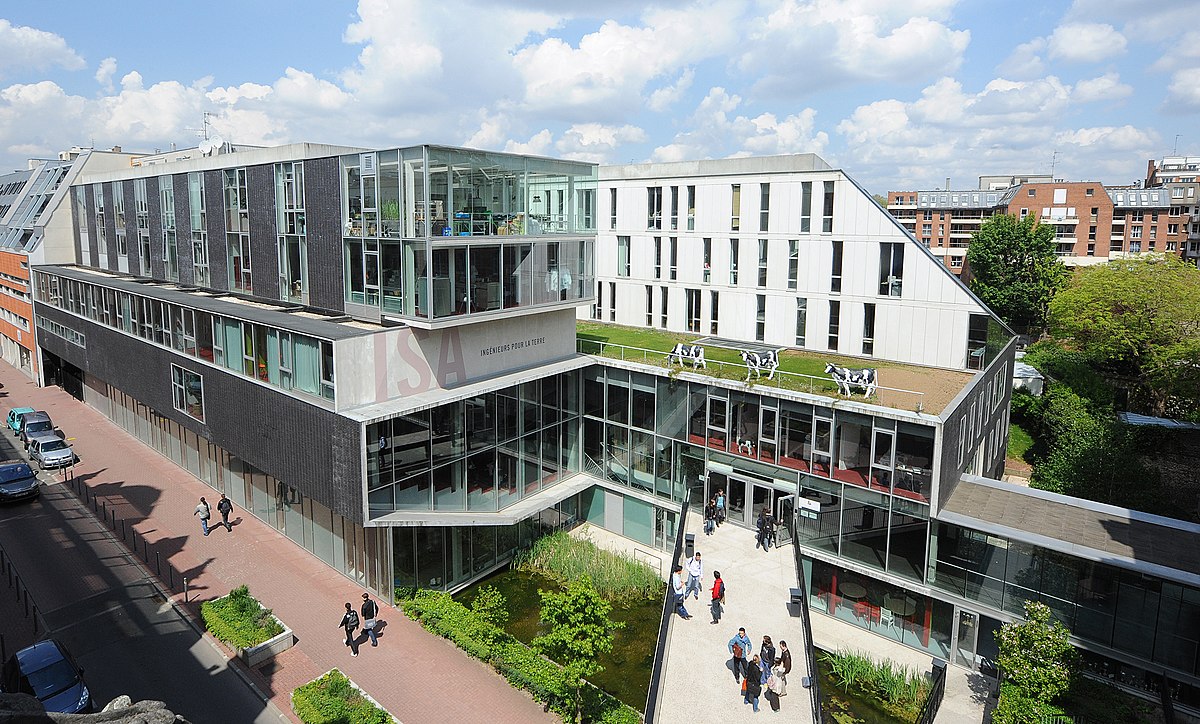
Search for natural sunlight solutions for the vegetable garden in the shade
Plants need sunlight to grow. That’s why it’s difficult to grow a vegetable garden in the shade. How can you grow salads and vegetables when the sun doesn’t reach them? And let’s not talk about fruits which need even more light. Most plants need 5000 lux of light to trigger photosynthesis. Chlorophyll is the engine of life and produces this nourishing reaction. Photosynthesis is a well-known biological reaction that allows plants to grow: Water + Carbon dioxide + Light = Glucose + Oxygen. As this formulation shows, sunlight is an essential condition for the success of crops. A vegetable garden in the shade can’t do well.
For the ISA, cultivating in the shade of the inner courtyard of the patio offers many advantages. Ease of implementation, accessibility, visibility, greening of the spaces… Strong points that can be appreciated when welcoming and training students in life sciences. It is still necessary to transform the vegetable garden in the shade so that it receives the sun’s rays.
To enhance the value of its experimental vegetable garden, ISA has launched a natural lighting for its patio. Under the supervision of a research engineer from the school, a group of 6 students from ISA and HEI carried out a preliminary study followed by a consultation of companies. The Espaciel proposal was chosen to sunlight the vegetable garden in the shade of the patio. This equipment was selected as a demonstrator of innovative ecological technology within the framework of the Life Tree program of the Catholic University of Lille.
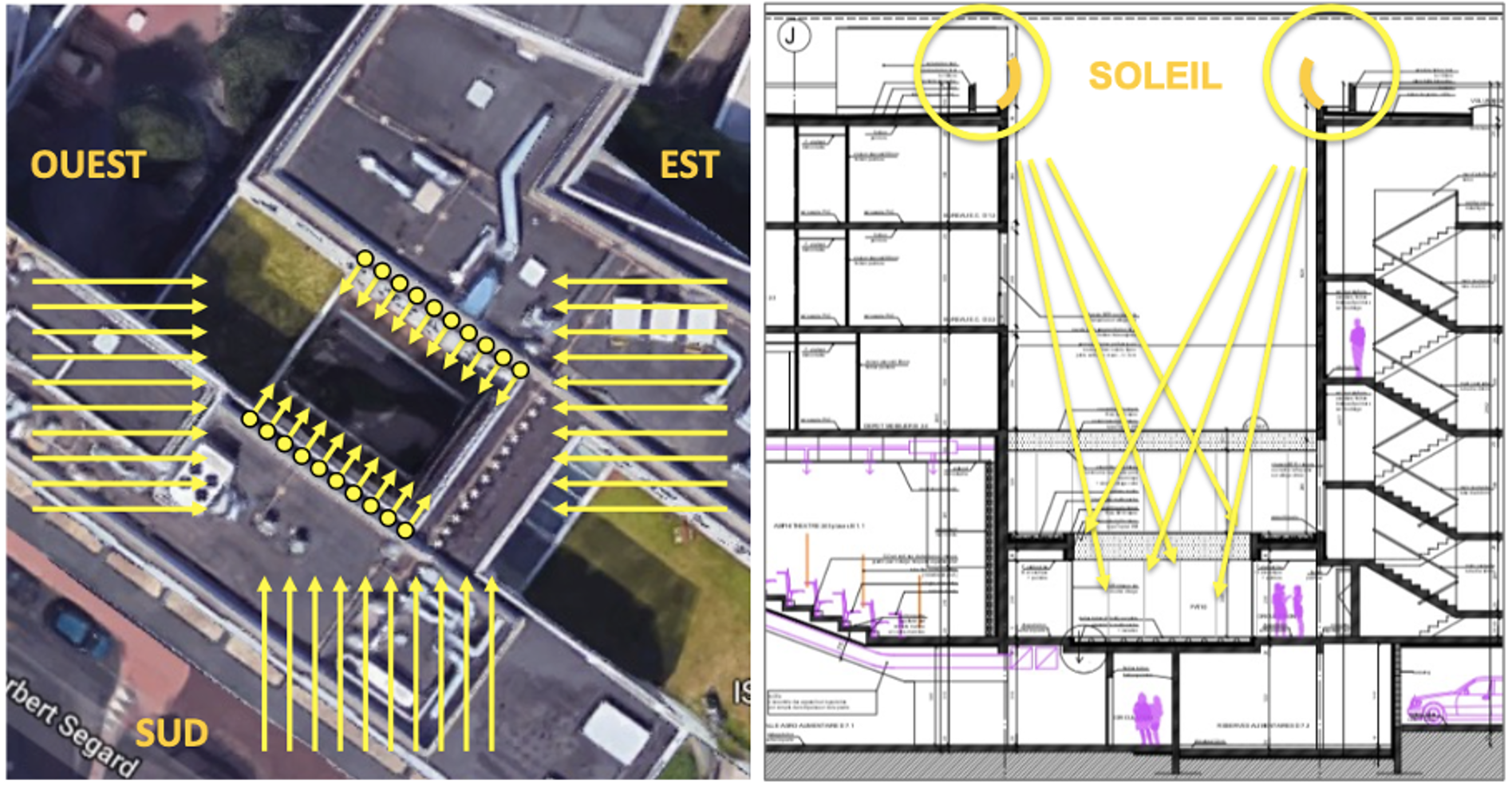
Implementation of the Espaciel solution for the vegetable garden in the shade
The system proposed by Espaciel uses the Solar Patio Reflector. Placed in the upper part of the building, it projects the sun downwards, to light the patio at the bottom of which is the vegetable garden in the shade. The Solar Patio Reflector has a curved surface that diffuses the sun’s rays over a long length. The reflected light is the same width as the reflector. Hence the idea of placing several of them side by side to light the entire patio surface. 20 reflectors equip the ISA patio. 10 are facing Southwest (active at noon and in the afternoon) and 10 are oriented Northeast (active in the morning).
The Patio Reflectors are located more than 20m above the vegetable garden in the shade. The curvature of the reflectors has been adjusted to the minimum. The surface is only slightly curved, producing a narrow diffusion angle. This optimizes the solar gain at the bottom of the patio, at the level of the dark vegetable garden.
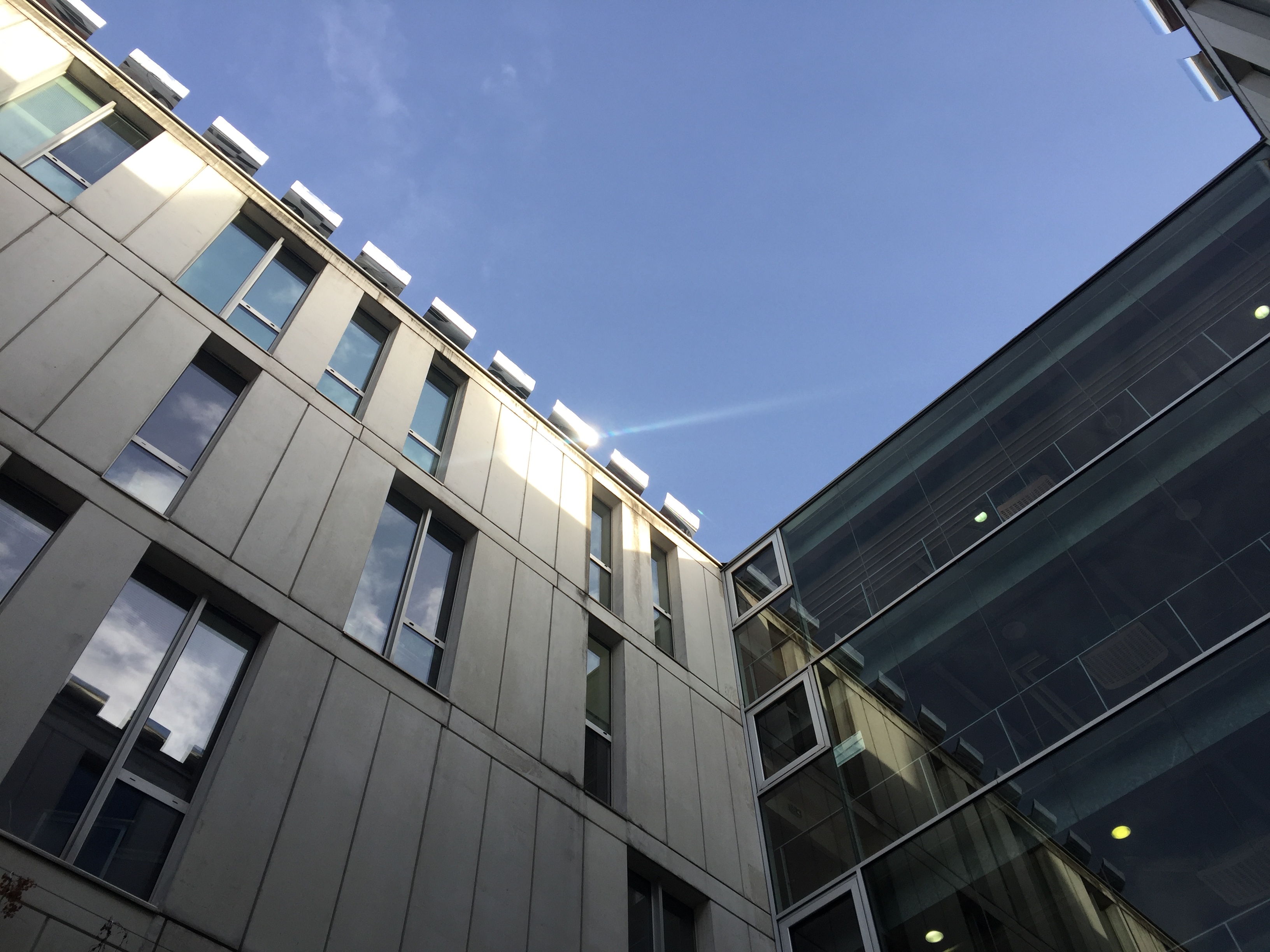
Results obtained with the Solar Patio Reflector
The effect of the reflectors is spectacular. Each one projects a very visible ray of light despite the relative diffusion of the sun. On a clear day, the illuminance on the ground at the level of the experimental garden goes from +/-2000 to +/-5000 lux.
Each ray of light moves at the rhythm of the sun’s path in the sky. This creates a sweeping effect on the terrace located at the back of the patio. In a given point of the garden, the sun is continuously present. But it comes successively from each of the reflectors according to the scrolling of the light. No more vegetable garden in the shade!
The movement of the sun in the sky and the curved geometry of the patio reflector make it difficult to imagine how it works. Here is a video that allows you to visualize the installation. The shooting took place on a sunny day and lasted 3 hours (one photo every 5 minutes). The timelapse video shows this sequence in 20 seconds. In the image, we can clearly see the rays of light passing on the ground of the patio, at the level of the experimental greenhouse and the vegetable garden in the shade.
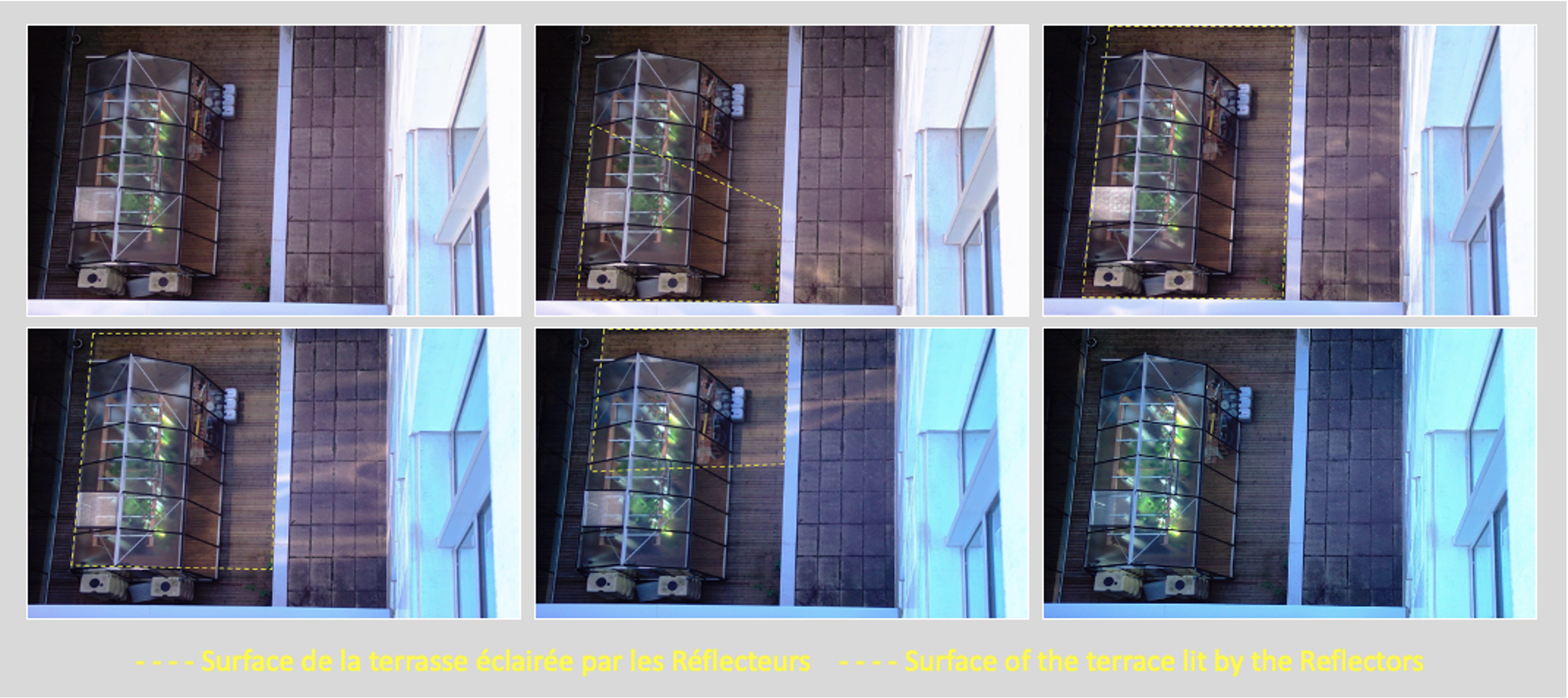
Conclusions and perspectives for the natural lighting of the ISA’s shaded vegetable garden
The installation of Espaciel reflectors to light the ISA’s shaded vegetable garden is part of the Life TREE demonstrators of the Université catholique de Lille. Within this framework, a follow-up of the installation is in progress. The garden is equipped with light sensors at various strategic points. The data are being collected and will soon be analyzed to evaluate the impact of the natural lighting of the vegetable garden in the shade and on the growth of the plants.



